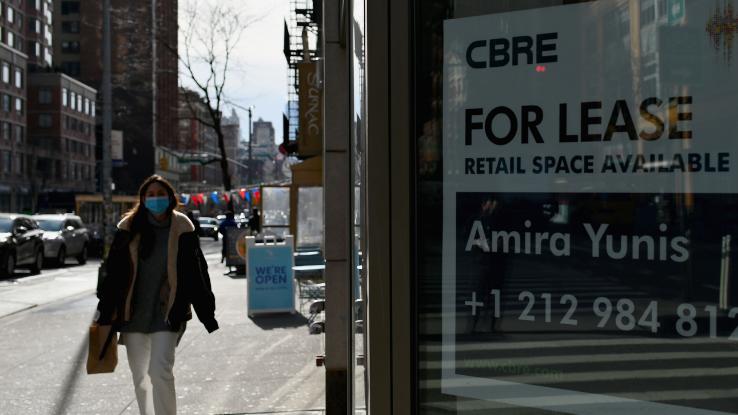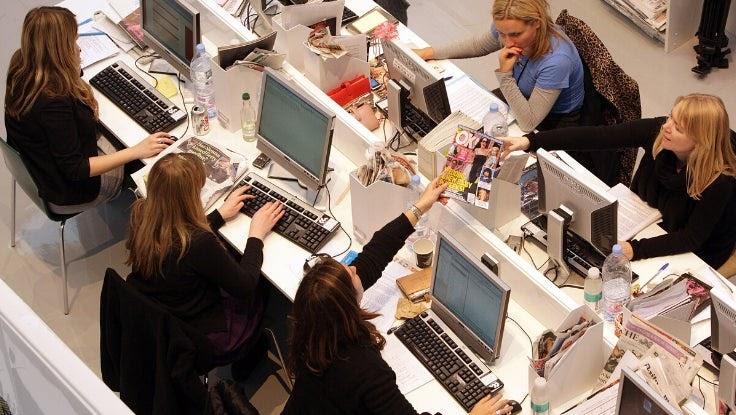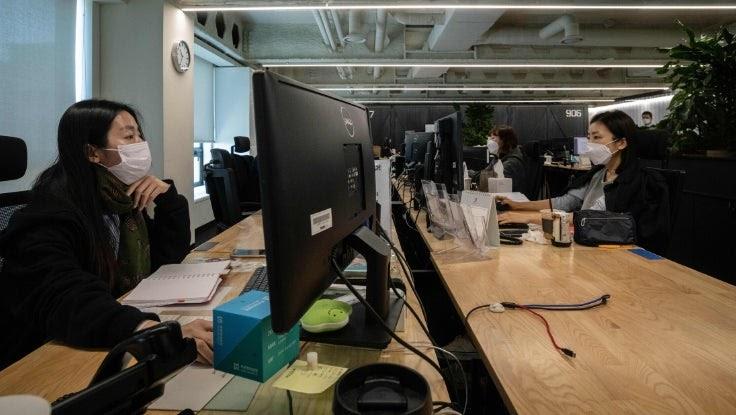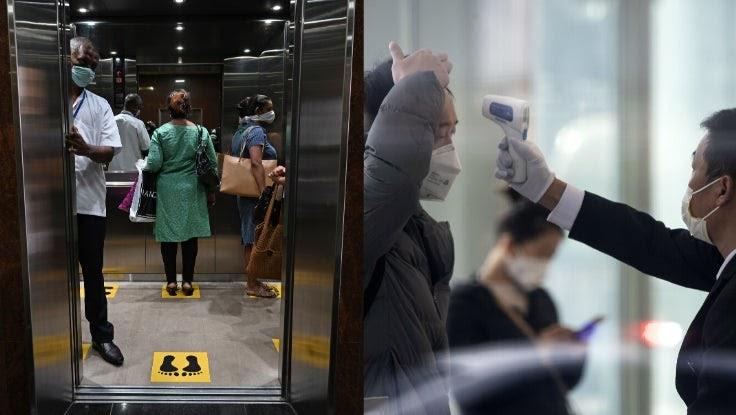How the COVID-19 Pandemic Has Changed Workplaces in Lasting Ways

Without a doubt, COVID-19 has altered life in countless ways. One of the most immediate impacts, however, was felt in the workplace, particularly for folks who hold office jobs. For the first time in their careers, many of these office works found themselves adapting to a work from home lifestyle — setting up impromptu work areas, battling Zoom fatigue and burnout and trying, hard as it might be, to maintain that work-life balance. While there’s certainly some safety to working remotely, especially when essential, frontline and customer service workers are not afforded the same privilege, many folks accustomed to offices are wondering when physical workplaces will reopen.
While it’s clear that office buildings aren’t going anywhere, it’s less clear how the working habits and workflows we’ve developed during the pandemic will translate to a post-COVID environment. From more flexible work schedules to COVID-safe office layouts and improved safety measures, here are the changes that we can expect to leave a more lasting impact on office-centered workplaces.
What Did We Do Before That Seems Strange Now?
The typical pre-COVID-19 workplace included open-floor designs, close seating plans and recirculating ventilation systems. Proponents of the open-office layout claimed that it made collaboration easier and helped eliminate the hierarchical nature of cubicles and offices. These types of layouts existed long before tech companies made them all the rage again, but the trend toward cubicles happened as a way to increase both productivity and privacy. Still, with COVID-19 on the mind, it’s hard to imagine feeling comfortable sitting shoulder-to-shoulder with an under-the-weather coworker in the future. (Not to mention, communal kitchens and restroom spaces all present some safety and hygiene concerns.)

Before the pandemic, chances are you didn’t give much thought to your office’s air quality, but, now, you might be a tad more interested. In fact, most office HVAC systems recirculate air that’s already in the building instead of bringing in fresh air. Although this method saves energy, it’s not great for indoor air quality — or the health of workers.
Why Won’t These Old Approaches Work Anymore?
Before the COVID-19 outbreak, studies revealed that workers in open offices get sick more often than folks who work in more private environments, like cubicles or private offices. For instance, Korea Centers for Disease Control and Prevention showed how quickly the disease spread throughout a call center. All of this to say, close proximity in a post-COVID office space seems unwise — or, at the very least, undesirable.

However, a workstation isn’t the only office area that poses problems. That is, hallways, elevators, restrooms and meeting spaces are all high-risk areas. Not only are you more likely to come into close contact with others in these spaces, but you’re also likely to share surfaces and items. Think about it: elevator buttons, doors, light switches, chairs, coffee machines, microwaves and tables are all high-touch surfaces. While the virus spreading from person to surface to person isn’t as big a risk factor as we once thought, the Centers for Disease Control and Prevention (CDC) still recommends communal offices be disinfected and cleaned at least daily.
As far as airflow is concerned, poorly ventilated buildings and office spaces that rely on recycled-air HVAC systems will likely face changes. After all, reusing indoor air leads to a higher risk of spreading the virus; COVID-19 particles can remain infectious for up to 20 minutes in the air (and the data is still out on Omicron variants), so just imagine what you can breathe in while you’re in the office for eight hours every day. “A core message is do not expect your risk to go down to zero,” Dr. Rajneesh Behal told The New York Times. But there must be some workable solutions, right?
How Will the COVID-19 Pandemic Continue to Impact Office Spaces in the Future?
Data from the Pew Research Center shows that 60% of workers who have jobs that can be performed remotely want to continue working from home after the pandemic. In 2020, only 54% of workers felt the same way. And, perhaps surprisingly, some of today’s biggest companies are very much on board with normalizing remote work even after the COVID-19 pandemic.

For example, Twitter shifted its temporary work-from-home policy to a more permanent one, depending on an employee’s responsibilities. “If our employees are in a role and situation that enables them to work from home and they want to continue to do so forever, we will make that happen,” Twitter’s vice president of people, Jennifer Christie, told CNN Business. “If not, our offices will be their warm and welcoming selves, with some additional precautions, when we feel it’s safe to return.” Meanwhile, Shopify CEO Tobi Lutke tweeted a rather bold, “Office centricity is over,” solidifying where his company stands on the remote work matter.
But that doesn’t mean all employers back a permanent remote setup. Even a tech giant like Apple has called folks back into the office and doesn’t seem to have a more permanent work-from-home plan on the horizon. Of course, there could also be a middle-ground. Much like rotating school schedules — some students are remote on a given day, while others attend in person — offices could implement schedules that help reduce office occupancy. In speaking to CNBC, Dr. Scott Gottlieb noted that, “In an office, you could split your employees, have half of them work at home, half of them come into the office on alternating days.” If a hybrid model can work for schools, it can do so in workspaces.
Sanitization is likely to increase in many workspaces. Offices, hospitals, and customer-facing businesses are likely to have increased cleaning procedures for work and may end up hiring more staff to keep their spaces clean. Sanitation workers led the charge in the COVID-19 front line yet weren’t treated the best. Hopefully this leads to more employment opportunities and better wages for people who keep spaces clean.
All of this to say, traditional office spaces will return — albeit differently — once it’s safer to congregate. Commercial real estate company Cushman & Wakefield has become an expert in helping businesses change their office plans due to the pandemic. For instance, the company worked with 10,000 organizations in China when its economy reopened and it consulted with the World Health Organization (WHO) and medical specialists to create what it has dubbed “The Six Feet Office,” a concept its own headquarters has adopted. One of the company’s most important practices is applying distancing measures, such as scattering workstations, posting visual signs to remind people to keep their distance and implementing one-way hallways to reduce cross-traffic.
Some of the changes we’ve seen in customer-facing workplaces, like cough and sneeze guards, may also make their way into office spaces. Moreover, we’re likely to see a switch to hands-free tech: Installing sensors that automatically turn on lights or open doors can drastically cut down on the number of high-touch surfaces we interact with. In fact, Estonian tech company Ninja Solutions even remodeled an office building to allow employees to open elevators and doors using their smartphones. Services like tap payment with credit cards and mobile payments are likely the new normal.
“The one thing that we know for sure is that ‘back to normal’ in the workplace is going to be anything but normal,” Cushman & Wakefield CEO Brett White told Forbes. “The protocols that we’re going to need to implement in offices and industrial [and] retail buildings in which we operate are completely changing.”





